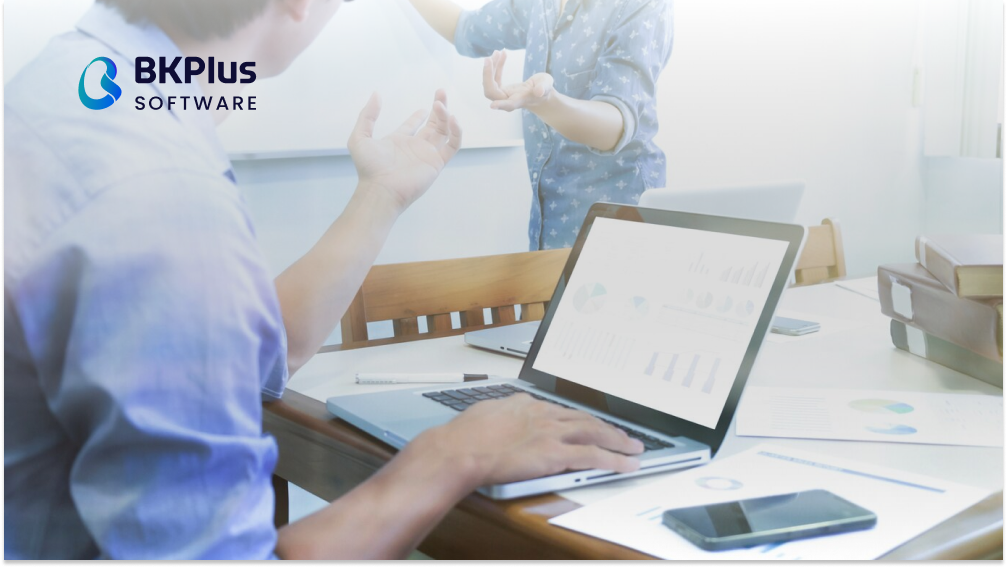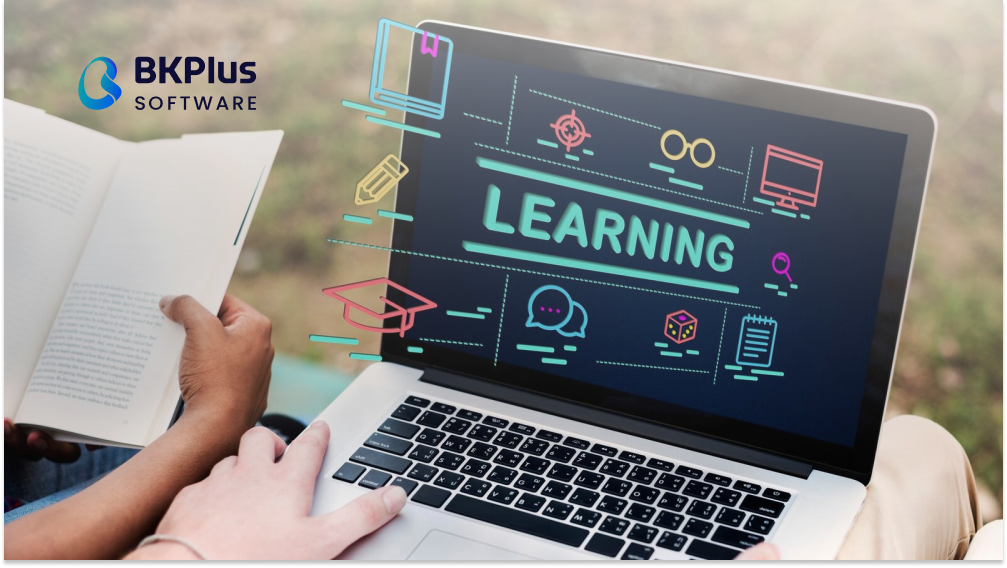Crafting a Learning Management System (LMS) is a strategic move for businesses and educators aiming to deliver seamless online learning. This guide dives into the essentials of building an LMS, covering costs, timelines, and key steps to success.
What is an LMS?
A Learning Management System (LMS) is a software platform designed to create, manage, and deliver e-learning content. From corporate training to academic courses, an LMS streamlines education by offering tools for course creation, user management, and progress tracking. Building a custom LMS allows organizations to tailor features to specific needs, ensuring a user-friendly experience that aligns with branding and goals.
Investing in a custom LMS provides distinct advantages over pre-built solutions. A tailored platform can integrate seamlessly with existing systems, such as HR software or CRM tools, enhancing operational efficiency. Customization also allows for unique features, like gamification or advanced analytics, which boost learner engagement and provide actionable insights. Additionally, a custom LMS ensures scalability, enabling organizations to adapt as user bases grow or requirements evolve.
Key Steps to Build an LMS
Creating an LMS requires careful planning and execution. The process involves defining objectives, selecting technologies, and ensuring a user-centric design. Below, we outline the critical steps to guide you through building an LMS that meets your organization’s needs.
Step 1: Define Your LMS Requirements
Before diving into development, clarify the purpose and scope of your LMS. Understanding your goals shapes the platform’s functionality and user experience. For instance, a corporate LMS might prioritize compliance training modules, while an academic LMS may focus on interactive quizzes and student portals.

Consider the following when defining requirements:
- Target Audience: Identify whether your users are employees, students, or customers. This influences design and content delivery.
- Core Features: List must-have functionalities, such as course authoring, user authentication, or mobile accessibility.
- Integration Needs: Determine if the LMS needs to connect with tools like Zoom, Salesforce, or payroll systems.
- Scalability: Plan for future growth, ensuring the LMS can handle increased users or content.
By outlining these requirements, you create a blueprint that guides development and prevents costly revisions later.
Step 2: Choose the Right Technology Stack
The technology stack is the backbone of your LMS, influencing performance, scalability, and maintenance. Selecting the right tools depends on your budget, technical expertise, and desired features. A typical LMS stack includes front-end, back-end, and database components.
For the front end, frameworks like React or Angular provide dynamic, responsive interfaces that enhance user experience. On the back end, languages like Python (with Django) or Node.js offer robust performance for handling user data and course content. Databases such as PostgreSQL or MongoDB ensure efficient storage and retrieval of learning materials. Cloud platforms like AWS or Google Cloud can further support scalability and hosting needs.
Partnering with a provider like BKPlus Software ensures access to expert guidance in selecting a stack that balances cost, performance, and future-proofing. This decision directly impacts how long it takes to build an LMS and its overall reliability.
Step 3: Design a User-Friendly Interface
A well-designed interface is critical to learner engagement. An intuitive LMS reduces the learning curve and encourages consistent use. Focus on creating a clean, responsive design that works across devices, from desktops to smartphones.
Key design considerations include:
- Navigation: Simplify menus and ensure users can access courses, profiles, and reports with minimal clicks.
- Accessibility: Incorporate features like screen reader compatibility and adjustable text sizes to accommodate diverse users.
- Branding: Customize colors, logos, and layouts to reflect your organization’s identity.
- Interactivity: Add elements like progress bars, interactive quizzes, or discussion forums to keep learners engaged.
Testing the interface with real users during development helps identify pain points and refine the experience, ensuring the LMS is both functional and appealing.
Step 4: Develop Core LMS Features
With requirements and design in place, development focuses on building the LMS’s core functionalities. These features form the heart of the platform, enabling content delivery and user management.
Course Authoring and Content Management
A robust LMS allows administrators to create and upload courses effortlessly. Tools like SCORM-compliant authoring software enable the development of interactive modules, while content management systems organize materials like videos, PDFs, and quizzes. Ensuring compatibility with multiple formats enhances flexibility for course creators.
User Management and Roles
Effective user management distinguishes between roles, such as administrators, instructors, and learners. Features like single sign-on (SSO) and role-based access control streamline authentication and permissions. For example, instructors can grade assignments, while learners access only their enrolled courses.
Analytics and Reporting
Analytics provide insights into learner progress and course effectiveness. Dashboards displaying completion rates, quiz scores, and engagement metrics help administrators optimize content. Advanced LMS platforms may integrate AI to offer personalized learning paths based on user performance.
Mobile Accessibility
With 70% of learners accessing e-learning via mobile devices, a mobile-friendly LMS is non-negotiable. Responsive design and dedicated apps ensure seamless access to courses on the go, increasing engagement and completion rates.
Step 5: Test and Deploy the LMS
Testing is a critical phase to ensure the LMS performs reliably. Conduct functional testing to verify features work as intended, usability testing to confirm the interface is intuitive, and performance testing to ensure the platform handles high user loads. Security testing is also essential to protect sensitive user data.
Once testing is complete, deploy the LMS on a secure hosting platform. Cloud-based deployment offers scalability and reduces infrastructure costs. Post-deployment, provide training for administrators and users to maximize adoption.
Step 6: Maintain and Update the LMS
An LMS is not a one-and-done project; it requires ongoing maintenance to stay relevant. Regular updates address bugs, enhance security, and introduce new features. Monitoring user feedback helps identify areas for improvement, such as adding integrations or refining the interface.

Partnering with a development firm like BKPlus Software ensures long-term support, from troubleshooting to implementing upgrades, keeping your LMS aligned with evolving needs.
How Much Does It Cost to Build an LMS?
The cost of building an LMS varies based on complexity, features, and development approach. Understanding these factors helps organizations budget effectively and avoid unexpected expenses.
Factors Influencing LMS Development Costs
Several variables determine the financial investment required for an LMS. A simple platform with basic features, like course uploads and user tracking, may cost $20,000 to $50,000. Complex systems with AI-driven analytics, gamification, or custom integrations can range from $100,000 to $500,000 or more.
Key cost drivers include:
- Feature Set: Advanced functionalities, such as VR support or multilingual interfaces, increase development time and expense.
- Development Team: Hiring in-house developers versus outsourcing to a firm like BKPlus Software impacts costs. Outsourcing often balances quality and affordability.
- Technology Stack: Licensed software or premium cloud hosting services add to expenses but enhance performance.
- Customization: Highly tailored designs or integrations with niche tools require additional resources.
- Maintenance: Post-launch support, including updates and hosting, typically accounts for 15-20% of annual costs.
Cost-Saving Strategies
To manage expenses without compromising quality, consider these approaches:
- Prioritize Features: Focus on essential functionalities in the initial launch and add advanced features in later phases.
- Use Open-Source Tools: Frameworks like Moodle or Open edX reduce development costs but may require customization.
- Leverage SaaS Platforms: Cloud-based solutions lower infrastructure costs and simplify scaling.
- Partner with Experts: Firms like BKPlus Software offer cost-effective packages, streamlining development and reducing errors.
By carefully planning and exploring cost-efficient options, organizations can build a high-quality LMS within their budget.
How Long Does It Take to Build an LMS?
The timeline for building an LMS depends on its complexity and the resources allocated. A clear understanding of the development process helps set realistic expectations and ensures timely delivery.
Typical LMS Development Timeline
A basic LMS with standard features, such as course management and user tracking, typically takes 3 to 6 months to develop. More sophisticated platforms, incorporating custom integrations or advanced analytics, may require 9 to 18 months. The timeline includes planning, design, development, testing, and deployment phases.
Key factors affecting duration include:
- Project Scope: A well-defined scope accelerates development, while frequent changes extend timelines.
- Team Size: Larger, experienced teams, like those at BKPlus Software, complete projects faster than small or novice groups.
- Testing Needs: Extensive testing for security and scalability adds time but ensures reliability.
- Integrations: Connecting the LMS with external systems, like HR platforms, requires additional development and testing.
Accelerating the Development Process
To shorten the timeline without sacrificing quality, consider these strategies:
- Agile Methodology: Iterative development allows for faster prototyping and feedback, reducing rework.
- Pre-Built Frameworks: Using platforms like Laravel or Django speeds up back-end development.
- Dedicated Teams: Assigning specialized developers to tasks like UI design or database management improves efficiency.
- Clear Communication: Regular updates between stakeholders and developers prevent delays caused by misaligned expectations.
By adopting these approaches, organizations can launch their LMS sooner, gaining a competitive edge in delivering online learning.
Common Challenges in Building an LMS
While building an LMS offers significant benefits, it comes with challenges that require proactive management. Recognizing these hurdles helps ensure a smoother development process.
One common issue is scope creep, where additional features or changes disrupt timelines and budgets. To mitigate this, establish a clear project scope and prioritize requirements early. Another challenge is ensuring cross-platform compatibility, as users access LMS platforms on various devices. Rigorous testing across browsers and devices addresses this concern.
Security is also critical, as LMS platforms handle sensitive user data. Implementing encryption, secure APIs, and regular audits protects against breaches. Finally, user adoption can be a hurdle if the platform is not intuitive. Involving end-users in the design phase and providing comprehensive training fosters engagement and satisfaction.
Conclusion
Building an LMS is a transformative endeavor that empowers organizations to deliver impactful online learning. By defining clear requirements, selecting the right technology, and prioritizing user experience, you can create a platform that meets your needs and scales with growth. Understanding how much it costs to build an LMS and how long it takes to build an LMS ensures informed planning and budgeting.
Partnering with experts like BKPlus Software streamlines the process, from development to maintenance, ensuring a high-quality, future-proof solution. With careful execution and ongoing support, your LMS can become a cornerstone of education and training success in 2025 and beyond.



